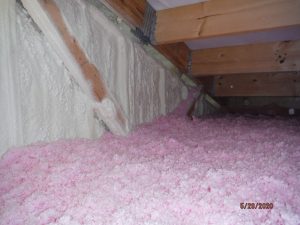I Think I Have Made Some Errors!
If you are a post frame building kit provider or a builder reading this article – please STOP SELLING ONLY ON A CHEAP PRICE. You are leaving dissatisfied clients in your wake and doing a disservice to our industry.
Reader RICK in IDAHO writes:
“Hello Sir! I think I have made some errors when I had my PB built regarding insulation plans. 30×40 with 12’, 8” side walls on the inside. Cement floor. No Tyvek or other barriers on walls or roof, just steel on wood all around. Soffit vents all the way around and vented roof cap. Was planning to have insulation blown in walls and ceiling, with a vapor barrier (reinforced plastic?) facing interior occupied area. Did not use closure strips but used canned spray foam to insulate/seal the ribs and edges walls, top and bottom and roof. Trusses were engineered for sheet rock ceiling. Won’t have temps above 50 F in winter on occasion But will try to keep above freezing in winter. No AC in summer. South East Idaho- hot summers and some -10/20 degree nights in winter with generally low humidity year around. Edge of the Idaho desert. Any advice? Thanks for sharing your knowledge with us!”
Thank you Rick for your kind words.
I cannot fault you – an average person having a post frame (pole) building built doesn’t know what they don’t know. I see this situation occur over and over when building providers or builders do not thoroughly explain options and their benefits to clients, instead relying upon a cheap price.
If your concrete slab on grade does not have a vapor barrier under it, seal the top of your floor. https://www.hansenpolebuildings.com/2019/02/how-to-properly-apply-post-frame-concrete-sealant/
 Use two inches of closed cell spray foam against your wall and roof steel – if not, you run a high risk of condensation troubles. If you are going to blow insulation into your walls, use a product such as BIBs. https://www.hansenpolebuildings.com/2011/11/bibs/
Use two inches of closed cell spray foam against your wall and roof steel – if not, you run a high risk of condensation troubles. If you are going to blow insulation into your walls, use a product such as BIBs. https://www.hansenpolebuildings.com/2011/11/bibs/
Do not use a vapor barrier inside of either your walls or ceiling. Make sure the spray foam applicator does not spray over your eave or ridge vents.
All of these things are manageable, they just could have been solved far more economically if they had been done right to begin with.






